I Ate Like a Children's Book Character for a Week — Here's What Happened (Part 1)
Unexpected meditations on friendship, lack, and desire.
“You know that thing,” begins a bit by comedian Chris Fleming, “where the most toxic person you’ve ever met over-relates to woodland creatures on social media?”
It’s the type of girl who will post a picture of a “mouse in a jean jacket,” with the caption “it’s me.” But it’s not her. She’s not a mouse in a jean jacket. Really, Fleming says, she’s more like “an eel with a gun.”
When I first heard this joke at a show, I sheepishly looked around the room, wondering if any friends were shooting me knowing glances. Unfortunately, I am a repeat offender of the publicly-relating-to-woodland-creatures variety. I’m in recovery now, but still: Was Mr. Fleming holding a mirror up to my own toxic tendencies?
This bit has haunted me ever since I decided to embark on this children’s book review project. I’ll be damned if I don’t love a little whimsy, but I swear — I’m not trying to perform a contrived sentimentality for pastoral aesthetics. On the jean-jacketed mouse to eel-with-gun spectrum, I’m probably, like, a parrot with a butter knife.
It peeves me that picture book characters have become the bread and butter of digital cottagecore posturing. But then that got me thinking about the actual bread and butter found in so many of these books. “Cottagecore Children’s Books (lots with a food theme!)” reads one listicle on a seemingly AI-generated dropshipping site called The Musical Forest.
“Food illustrations were always some of my favorite and always made me hungry,” writes ‘Karis.’ “Add a cute cottagecore theme to that and you have some of my favorite books!”
I began to wonder — for all the times I’ve shared an image of a bunny rabbit sipping tea and noted “mood,” how often have I actually put my money where my Instagram story is and lived the illustrated woodland forest creature lifestyle?
And so, dear reader, I bring you this: I Ate Like a Cottagecore Character for a Week and All I Got Was This Lousy Diarrhea (Part 1)
MONDAY - Bread and Jam for Frances by Russell Hoban (1964)
You might already know Frances from this image:
I thought I related to her; I have posted as much before. I intended for this to be an easy Day One, but I am immediately presented with a conundrum. The whole premise of this book, I’m realizing, is that Frances only eats bread and jam — and she eats a wholeee lot of it. Meanwhile, the other characters consume a bunch of different stuff. Do I follow in Frances’ footsteps and feel sort of gross and constipated all day, or do I try to eat like every single character combined and feel sort of gross and constipated all day? I suspect this might be an ongoing theme.
I decide to play it by ear. For breakfast, Frances’ three family members each eat a soft-boiled egg, while Frances has bread and jam. I like breakfast, and I’m getting preemptively scared about my protein intake this week, so I decide to eat all of it: two slices of sourdough, some Bonne Maman cherry preserves, and three soft-boiled eggs.
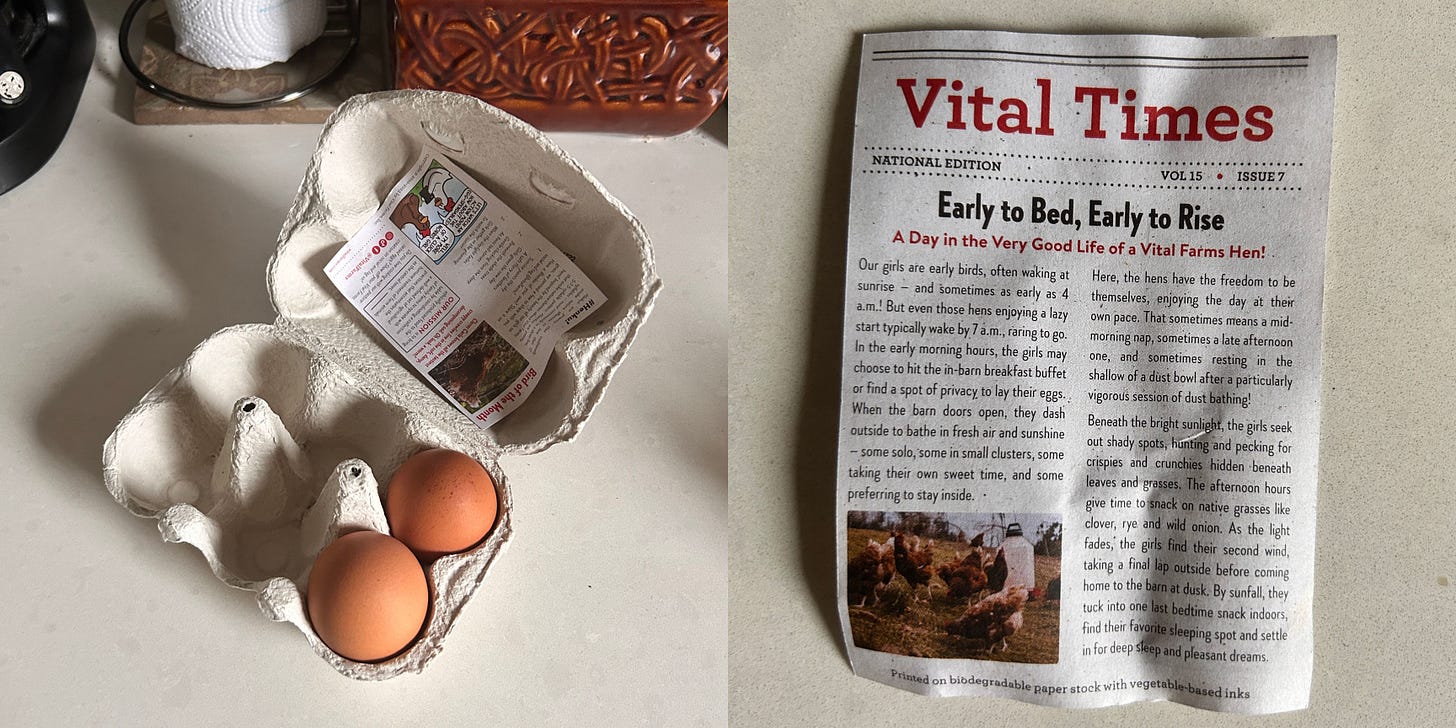
Alas, another hurdle awaits me: I only have two eggs left. They’ll have to do. I notice for the first time that my egg carton comes with a miniature faux newspaper that features a front page story about the chickens who allegedly laid my breakfast: “A Day in the Very Good Life of a Vital Farms Hen!” It’s a sweet touch, though the leaflet persistently refers to the chickens as “the girls”— an oddly infantilizing choice given the fact that these are grown chickens of egg-bearing age. It might have been the year of ribbons and bows, but it seems the societal push to romanticize girlhood has reached even those with feathers.
Anyway, enough about “the girls.” We’re here to talk about one girl: Frances. And for lunch, Frances eats — surprise — bread and jam. Her classmate, however, brings a truly baller spread: a cream cheese sandwich with cucumbers and tomatoes on rye, a pickle, a bunch of grapes, a tangerine, a hard-boiled egg, a thermos of milk, and a custard cup. Now we’re talking.
I cannot find rye bread in my neighborhood. I also do not know where to acquire a custard cup. I swap the thermos of milk for a glass of oat milk, obviously. But I have to say. This is one damn good lunch.
By the time 8 p.m. rolls around, I could choose from one of two dinners in the book. The first is a plate of sweet potatoes, a string bean — literally just one string bean1 — and something called “strained beef.” Alternatively, I could have spaghetti and meatballs. Guess which one I chose.
I didn’t manage to cover every meal in the book today, but I do think I stayed pretty true to the text. I’m feeling good. But do I feel like Frances?
I think back to the image of her crying. This excerpt circulates frequently on social media, and devoid of context, it seems to show Frances in tears for no reason. She has what she loves right in front of her, so why isn’t it enough? “I get it,” writes @pastapilled.
But reading the book in its entirety offers a different interpretation. Sure, Frances loves bread and jam, but she only insists on eating it for every meal because her parents are trying to feed her something different. When they start to only offer her bread and jam, she realizes she wants what they’re having for dinner instead. Frances is crying because she’s a fussy eater, sure, but also because she always wants most that which is out of reach.
Anne Carson explores this relationship between hunger and repulsion in her book, Eros the Bittersweet. “That which is known, attained, possessed,” she writes, “cannot be an object of desire.”
Suffice to say — yeah. I get it.
TUESDAY - Jamberry by Bruce Degen (1982)
This one was a flop. When Karis from The Musical Forest said this book had a food theme, “she” did not specify that she meant literally one, single food. Berries. I guess there are various types of berries, also berries in jam form. But I cannot just eat berries for a day. I’m not opposed to starving myself for the sake of literature, but this isn’t even literature. It’s just a bunch of made up names for berries that rhyme. There’s no narrative. There are no stakes. There is no explanation as to why this little boy is hanging out with a suspicious-looking bear in a top hat. I make myself a mixed berry smoothie with a side of toast and jam, and call it a day.
WEDNESDAY - Frog and Toad by Arnold Lobel
My partner has described my outfits as having “Frog and Toad vibes” on multiple occasions — a surefire compliment on bisexual zoomer Twitter, but one that adopts a derogatory patina when said out loud, in the real world, to one’s ostensible object of desire. Basically, being seen as a frog and/or toad by a lover feels … not very sexy. But perhaps Frog and Toad’s culinary selections will change my mind, revealing to me a secret libidinal force underpinning corduroy and galoshes.
There are four books in the Frog and Toad series; while working my way through the list, I’m struck by how canonically queer these stories truly are. For one, Frog and Toad almost exclusively consume hot tea, which is obviously the 20th century counterpart to iced coffee. And they say things like, “In the evenings we will sit right here on this front porch and count the stars.” And also the author was gay.
Frog and Toad Are Friends (1970) doesn’t provide me with much in the way of sustenance. The only food or drink mentioned is a cup of hot tea. In Frog and Toad Together (1972), Toad has “something to eat” for breakfast, but Lobel doesn’t say what. It looks like a bowl of porridge in the picture, though, so I decide to have that along with hot tea for my first meal. That feels right.
For lunch, Frog and Toad All Year (1976) only offers chocolate ice cream cones, cake, and more tea. These guys seem to be subsisting on treats alone and probably have crazy blood sugar levels. I guess the specter of diabetes doesn’t haunt the Frog and Toad universe. But finally, at long last, Days With Frog and Toad (1979) contains a real meal: Toad sets out to bring Frog a basket of sandwiches and a pitcher of iced tea … then falls in a river.
I can hardly believe it. His tumble renders the sandwiches “wet” and the pitcher of iced tea “empty.” It feels like the universe is playing a cruel joke on me, but obviously Toad has it way worse.
Except Frog doesn’t care that their lunch is spoiled. “This morning when I woke up I felt good because the sun was shining. I felt good because I was a frog,” he tells Toad. “And I felt good because I have you for a friend.” So Frog and Toad sit on a rock together and eat the wet sandwiches anyway.
I’m genuinely moved by this final scene in the final book. Duh, it doesn’t matter what they eat, as long as they’re together!!
I question whether I have anyone in my life who would eat river-soaked sandwiches just so they could spend time with me. I think back to my initial question — am I a toxic person who over-relates to woodland creatures? Am I the eel with the gun? It’s been a lonely pre-Christmas week in New York; most of my friends have already gone home for the holidays. I’ve spent a lot of time by myself, in my own head, and that worries me. All of these book characters — Frances, the Jamberry boy, Frog and Toad — have lives enriched by the tender balm of friendship.
I decide to ask around about the sandwiches. I receive varying levels of enthusiasm.
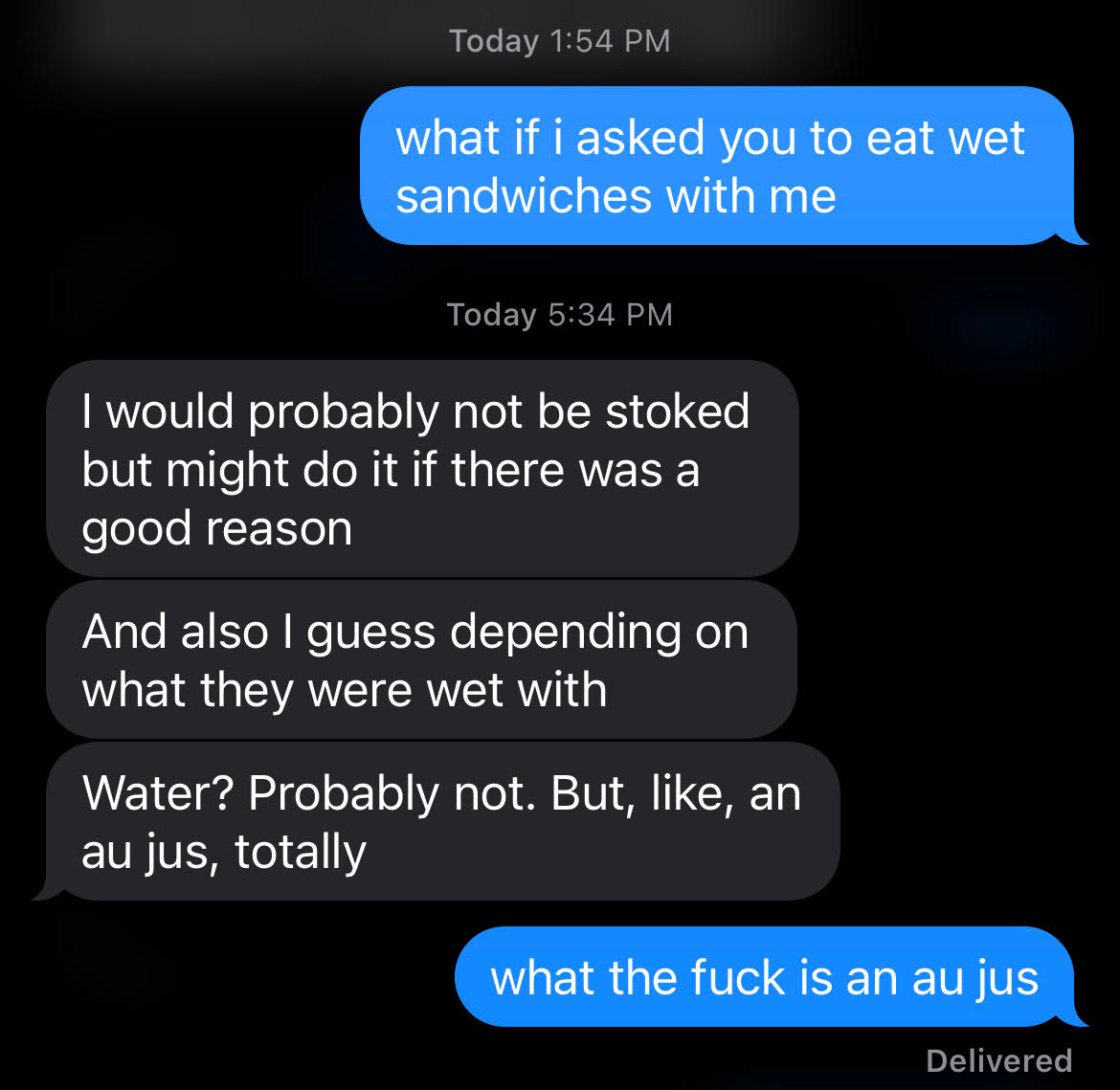
One of my friends actually seemed pretty down. But I still end the night feeling glum, so I decide to recreate one of the more iconic moments from the Frog and Toad books — this oft-memed scene from Frog and Toad Together:
I resolve to bake some delicious cookies — the “best cookies ever,” according to Frog — and eat as many as possible until I fall asleep.
I don’t usually bake; I find it stressful and tedious. I think people who do it as a hobby probably have an undiscovered genetic mutation in their brains that endears them to such activities (see also: crochet, Scrabble).
Nevertheless, I spend my night baking several dozen chocolate chip cookies. I’ve made them before, a long time ago, but I’m still nervous. I convince myself I’ve gotten egg shells in the bowl (I haven’t), that the cookies will stick to the pan (they didn’t), that I was stirring the batter the wrong way (I wasn’t).
My roommate, however, does have the baking mutation. She bakes a lot and is very good at it. She seems excited that I’m actually using the kitchen, and she comes out of her room several times to offer me fancy baking things: her parchment paper, her vanilla extract, her KitchenAid. I’m too embarrassed to tell her that I’m randomly baking chocolate chip cookies at 9 p.m. on a Wednesday because I need content for my Substack. But still, I enjoy her company, and her willingness to help. I feel closer to her for it.
I’m hunched over the baking sheet — shoving my seventh, crumbling, still-too-warm cookie into my mouth — when it dawns on me.
This whole time I’ve been craving companionship, while failing to realize the friend I have, right here, in my own home. Desiring the out-of-reach, neglecting what’s in front of me. In the tradition of Frances, I have friends and family and roommates who care about me — so why am I crying?
I’m learning a lot from these picture books, truly. It’s kind of humbling.
And I still have to do this shit for four more days.
Hoban also notes here that Frances’ sister, Gloria, likes to “practice with a string bean” when she can. I cannot for the life of me figure out what it means to “practice with a string bean.” The book is even dedicated to a “Julia,” who also likes to “practice with a string bean when she can.” This phrase has been playing on repeat in my head for weeks. It’s literally kept me awake at night. Please, leave a comment below if you know what it means to ““practice”” with a “““string bean.”””






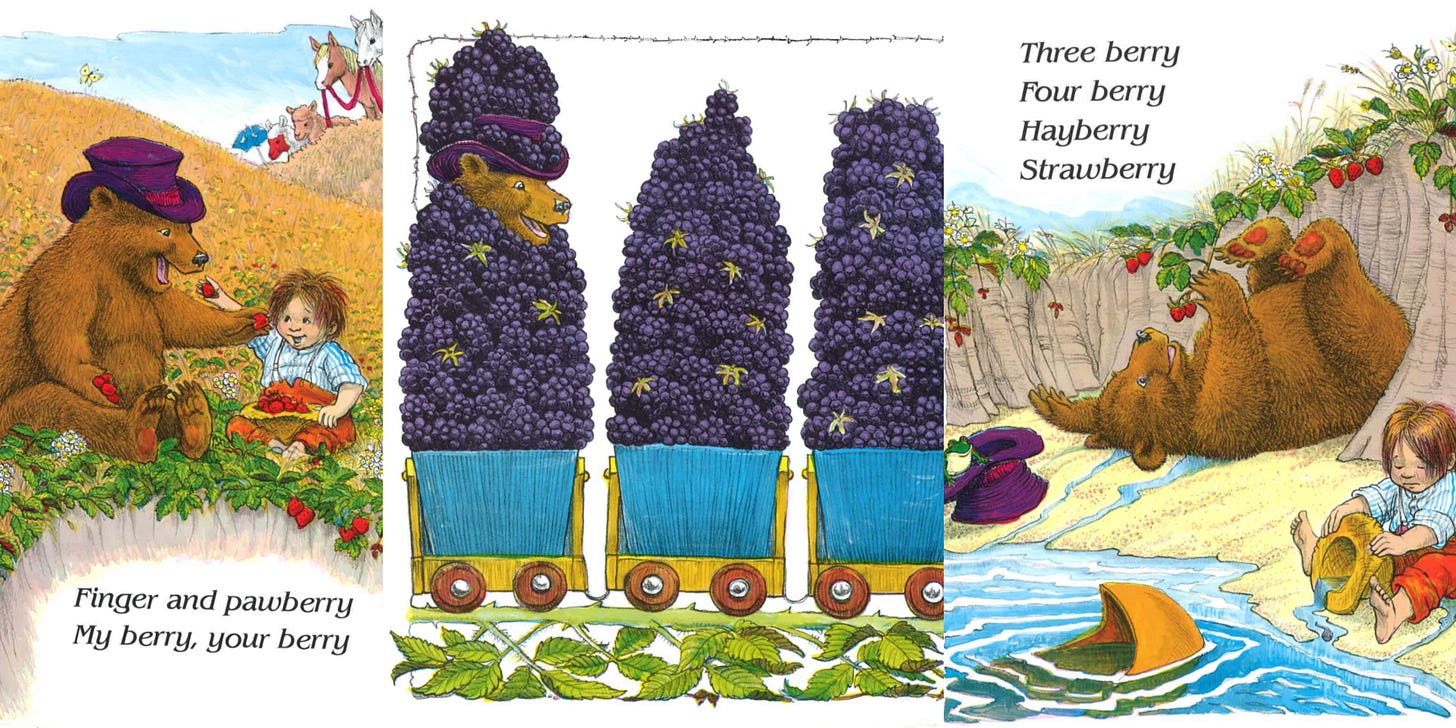
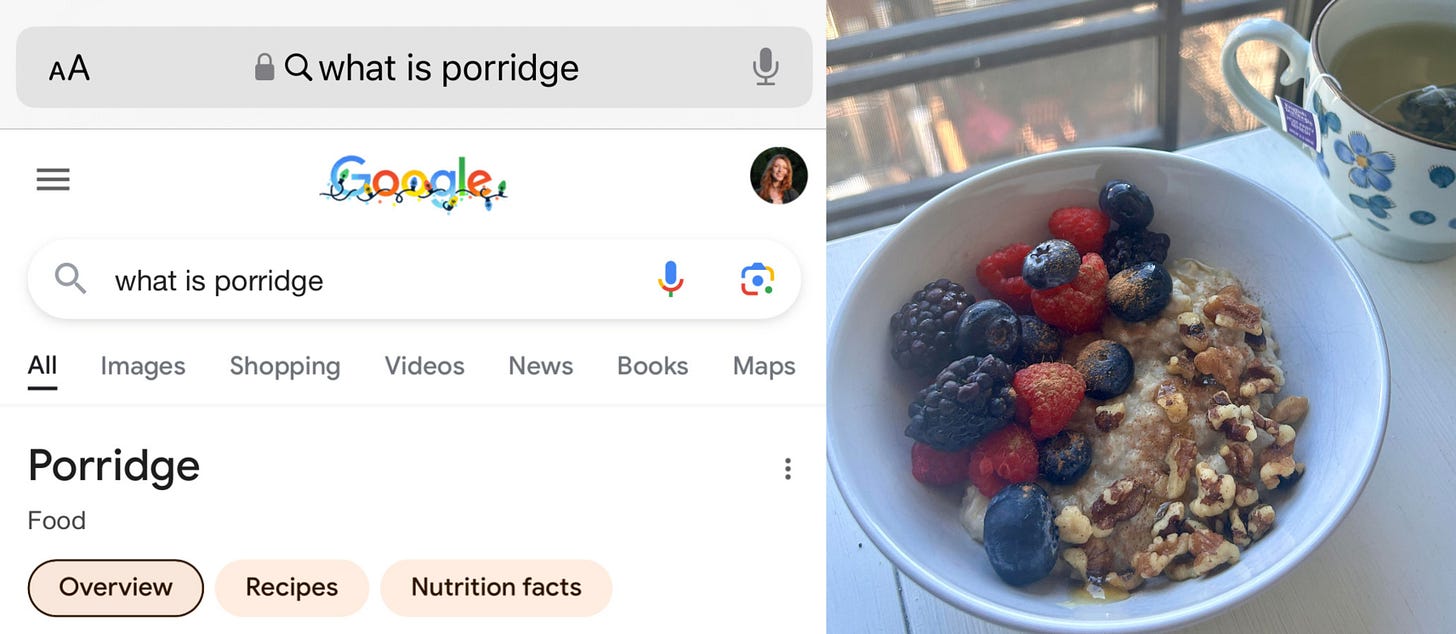
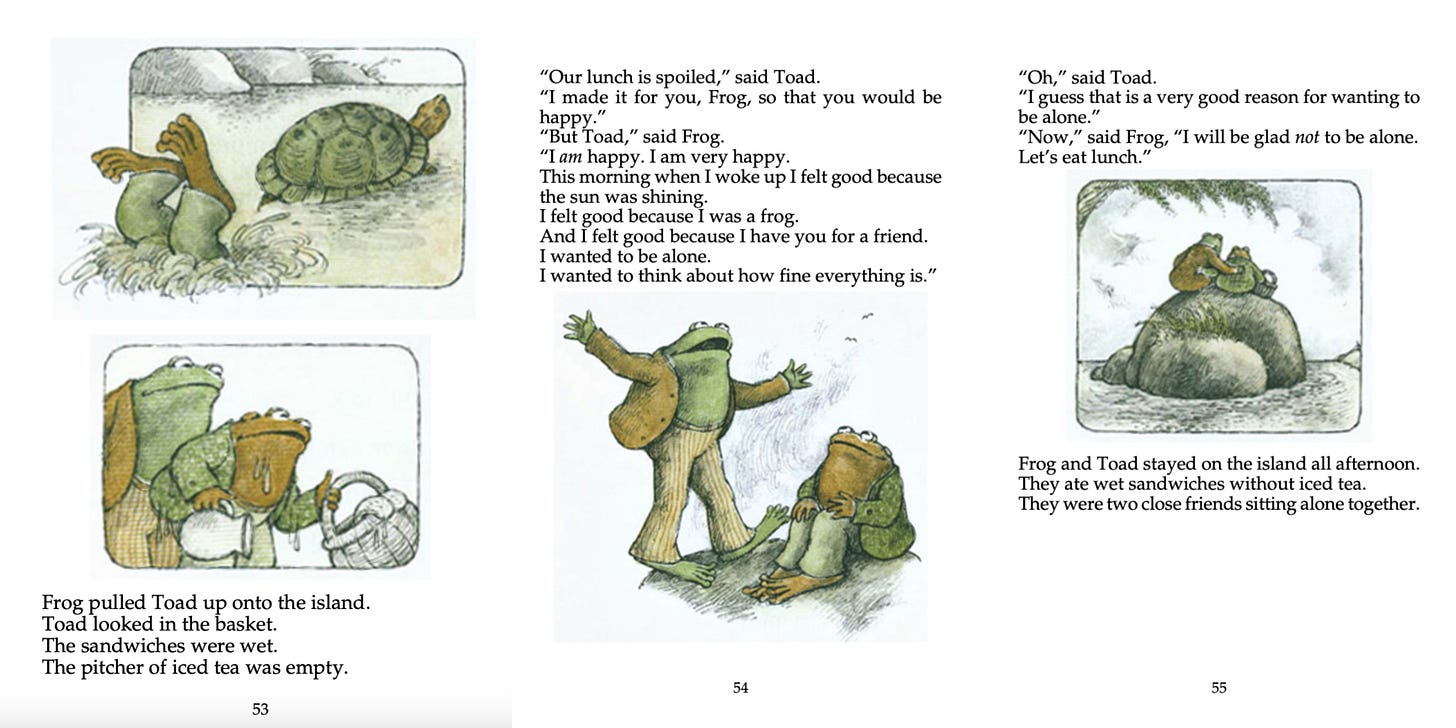
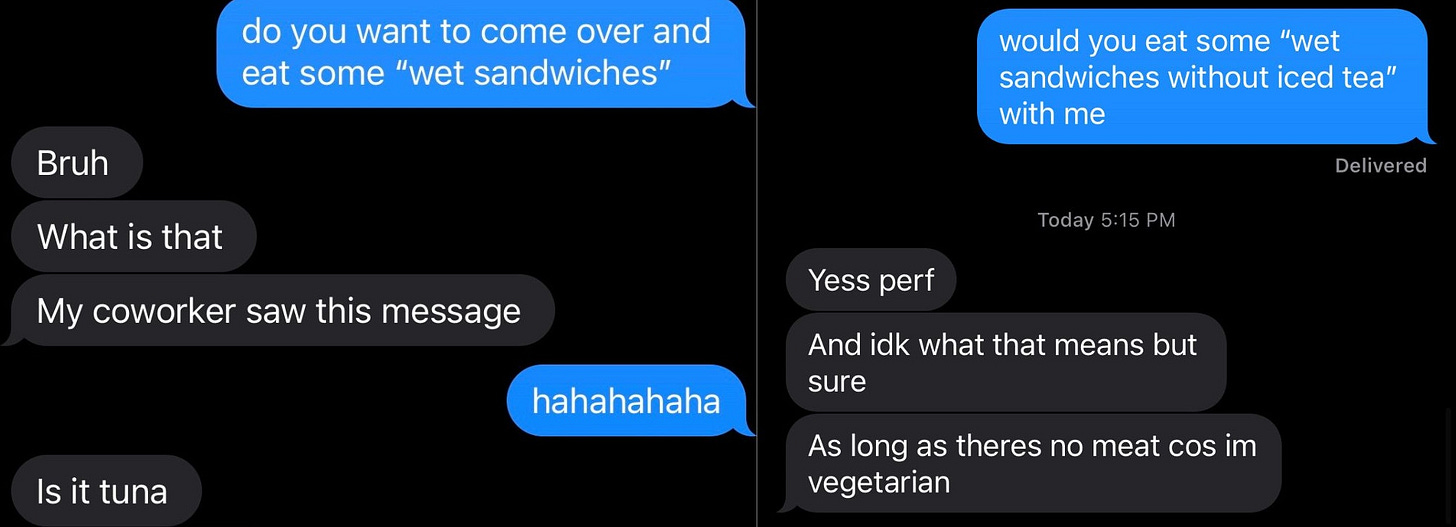

in defense of the wet sandwich....
Richard scarry erasure........